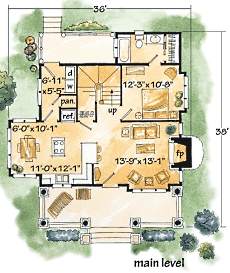
The floor is made of “puncheons,” heavy pieces of roughly dressed timber, hewed out with a broad ax and secured with pegs. (6) The Azel Dorsey cabin in the Lincoln Pioneer Village near Rockport in southern Indiana, is a two-story cabin with a six-over-six, double-hung sash windows, and an enclosed chimney on the east. (5) An Oregon four-square cabin showing very heavy chinking. On some reservations, Native Americans adopted the white log cabin form of lodging. (4) Navaho children standing in front of their Arizona cabin near Canyon de Chelly with sod roof. Courtesy of Historic American Building Survey. This cabin housed two families before and after Emancipation. (3) A dogtrot slave cabin at Belle Mont Plantation in Colbert County, Alabama. Forest Service trapper in front of his cabin 1908. It was originally the home of the pioneering Ferguson family, who raised 13 children in the cabin. PHOTOS: (1) This 18’ x 18’ 1800s log cabin, built possibly in the mid-1800s, is part of the “Pioneer Village” in the Spring Mill State Park near Mitchell, Indiana. This construction had special advantages: animal warmth rose up to the second level, only one structure had to be built for both human and beast and feeding and caring of livestock did not require going out in the frigid cold. (Sort of like the pioneer version of a duplex.) Some even were built as housebarns that housed livestock in the lower level and people in the upper level, built especially by Austrian, Flemish, German and Swiss immigrants. Some even had open porches called “dog trots” or “possum trots” between two living areas, all under one roof. Some had lofts or second stories, some had multiple rooms or wings, some had porches, cellars, or summer kitchens. The “four-square” was the simplest construction. Styles of log cabins varied wildly, based on the ethnicity or heritage of pioneers, availability of materials, the contour of the land, and the size of the family. Location was important for water accessibility, runoff, proximity to crops and livestock, and, sometimes, defensibility. Usually cabins faced the south for sunlight and faced away from the west wind. Gaps between logs could also be filled with wood in the form of shake shingles, wedges or slender poles made from long limbs, but mortar was usually used to cement all pieces together and block air holes. Chinking was also easily repaired from year to year, was cheap and made from readily available raw materials. Chinking provided some flexibility in movement and enabled the cabin to withstand changes in wood or flexing from tornadoes or earthquakes. The wood expanded or constricted with variances of heat and moisture from season to season. Contrary to some popular beliefs regarding log cabin building, logs were not fitted together as tightly as possible. Recipes for chinking mortar often included mud, clay, sand, mixed with water (or “spit” as some pioneer recipes called for), hog, goat or cow hair, and even livestock manure or buffalo chips.

A wide variety of materials could be used for this process, from small sticks or pebbles, to clay, mud, grass, swamp moss, oakum, livestock hair, corn cobs, leaves, or all the above. This was important not only to keep out the cold, but also insects, vermin, and snakes. One of the final steps was chinking to fill in gaps between logs, stone and window openings. (Some pioneers even hung a fancier iron cooking “crane” that could swing out from over the fire, so stews, soups, and other dishes could be spooned straight from the pot.) While building the chimney, when you can’t lift the rocks any farther above your head, you’ll have to build a ladder from tree limbs, so you can stack the rocks at least 8-12 feet high for the stack. You’ll hang pots and Dutch ovens off that to cook over the fireplace fire.

When you’ve built the chimney walls about two or three feet from the floor, you’ll probably want to insert an iron, oak, or chestnut bar into the mortar across the hearth. Exhausting.) Now you have to mortar the heavy stones together to build a fireplace. (Ever tried to stir concrete? It’s like wrestling an alligator. Then you have to gather clay, dirt, sand, and carry water to mix it for mortar. And while you’re carrying stones for the foundation, you’ll also have to move several additional tons of field stone for the fireplace and hearth. Then you had to gather tons of stones dug up from the prairie, woods and stream beds to build a stone foundation.


 0 kommentar(er)
0 kommentar(er)
